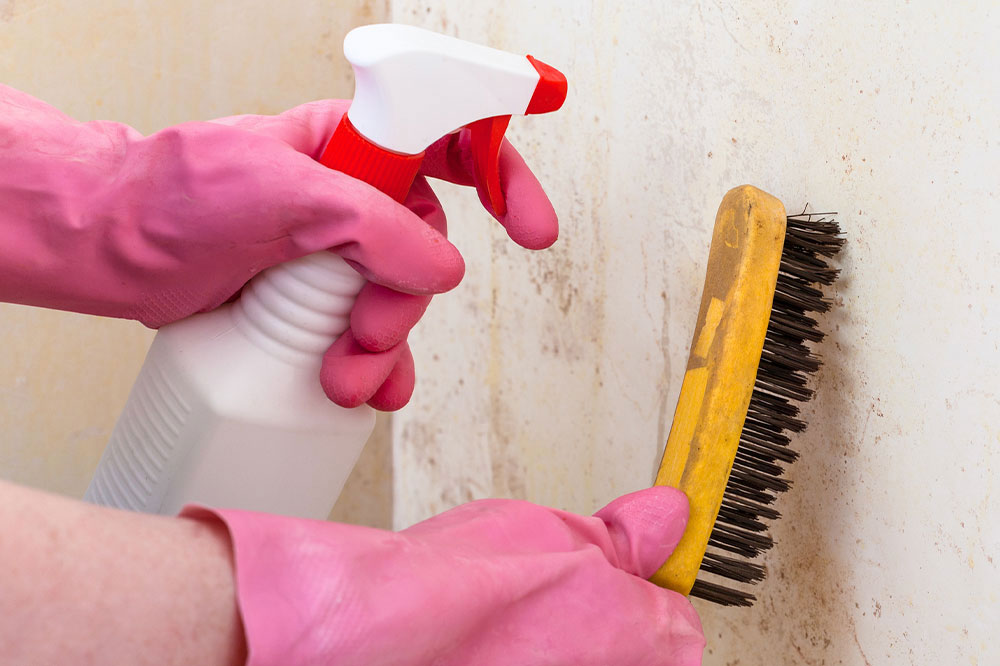
Tips to prevent and manage mold growth
Mold growth is common in buildings and homes, particularly in areas with high moisture levels. It can grow on various surfaces and materials, posing risks to both property and human health. Mold growth can also be an unpleasant sight. It can appear due to moisture retention, providing a suitable environment for them to flourish. This article provides valuable information on mold removal, including tips, remedies, and the role of professional service providers.
Understanding mold growth
Causes of mold growth
- Moisture sources
- Leaky roofs, windows, pipelines, and flood-affected areas.
- Suitable environments
- Surfaces such as paper, cardboard, wood, dust, paints, ceiling tiles, wallpaper, insulation, carpet, fabric, drywall, and upholstery.
Common indoor molds
- Cladosporium, Penicillium, and Aspergillus
Mold entry points
- Open doorways, windows, vents, and HVAC systems.
- Carried indoors by clothing, shoes, or pets.
Prevention and maintenance
By following these simple steps, one can prevent the growth of mold in many areas:
- Routine maintenance
Inspect regularly for damage by water leakage and visible mold, and address conditions promoting their growth. - Controlling humidity
Keep the humidity levels inside your house between 30% and 50%. This will help avoid creating a favorable atmosphere for mold growth. - Ventilation and leaks
Use air conditioners, dehumidifiers, and proper ventilation to prevent a humid environment. Repair plumbing leaks as soon as possible. If the sewage block is causing mold growth, seek the assistance of professionals who clean and fix these issues. - Moisture-prone areas
Avoid using carpets or other absorbent materials like ceiling tiles. Mold can grow in the pores of these things and will become difficult to remove. If you use carpet or tiles, promptly clean and dry them after flooding to avoid moisture retention.
Mold removal techniques
DIY Remedies
- Remove moldy items, clean and dry affected areas
Throw away the mold-laden and damaged items out of the house. Scrub off hard surfaces covered with mold using detergent water and dry the area completely. - Techniques
Wet-vacuuming, scrubbing with soapy water and a bristle brush, or using commercial products or a bleach solution. Homeowners can often handle small-scale infestations.
Professional mold removal services
If the growth has covered a vast area, you will need help to handle it. So, to clean up extensive infestations, you can hire a contractor or seek the help of service providers who do the work perfectly. Also, if there is uncertainty about handling mold growth, it requires professional assistance. It is necessary to take prompt action to prevent health problems and property damage.
Cleaning specific mold-infested areas
Shower tiles and grout
- Treatment
Use grout cleaner or mold remover, scrub with a non-scratch sponge or grout brush, and rinse with hot water.
Plastic shower curtains and liners
- Treatment
Treat curtains and liners with mold cleaner while hung up or wash in a washing machine on the delicate cycle with warm or hot water and fabric-safe bleach.
Effectively removing mold requires addressing moisture issues, thorough cleaning and drying of affected areas, and employing appropriate cleaning methods. While homeowners can often handle small spreads, larger infestations may require professional assistance. Taking prompt action is crucial to prevent health problems and further property damage.




